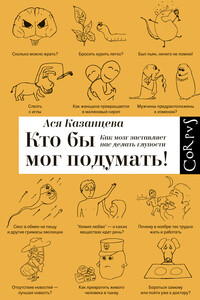13 Bartal I. et al. Helping a cagemate in need: empathy and pro-social behavior in rats // Science, Dec. 2011, Vol. 9; No. 334(6061), 1427–1430.
14 Langford D. et al. Social modulation of pain as evidence for empathy in mice // Science, June 2006, Vol. 312, No. 5782, 1967–1970.
15 Brosnan S. and de Waal F. Monkeys reject unequal pay // Nature, Sep. 2003, Vol. 425, 297–299.
16 Hamlin K. and Wynn K. Young infants prefer proso-cial to antisocial others // Cognitive Development, Jan. 2011; Vol. 26(1), 30–39.
17 Hamlin K. et al. How infants and toddlers react to antisocial others // PNAS, Dec. 2011, Vol. 108, No. 50, 19931–19936.
18 Hamlin K. et al. Not like me = bad: Infants prefer those who harm dissimilar others // Psychological Science, Apr. 2013; Vol. 24(4), 589–594.
19 Silveira L. Experimenting with spirituality: analyzing the God Gene in a nonmajors laboratory course // CBE Life Sci Educ. 2008 Spring; 7(1): 132–145.
20 St-Pierre L. and Persinger M. Experimental facilitation of the sensed presence is predicted by the specifc patterns of the applied magnetic felds, not by suggestibility: Re-analyses of 19 experiments // International Journal of Neuroscience, 116: 1079–1096, 2006.
21 Persinger M. The neuropsychiatry of paranormal experiences // Journal of Neuropsychiatry and Clinical Neurosciences, 2001 Fall; 13(4): 515–524.
22 Granqvist P. et al. Sensed presence and mystical experiences are predicted by suggestibility, not by the application of transcranial weak complex magnetic felds // Neuroscience Letters, 2005 Apr 29;379(1): 1–6.
23 Tinoco C. and Ortiz J. Magnetic stimulation of the temporal cortex: A partial “God Helmet” replication study // Journal of Consciousness Exploration and Research, April 2014, Vol. 5, Issue 3, 234–257.
24 Devinsky O. and Lai G. Spirituality and religion in epilepsy // Epilepsy and Behavior, May 2008, Vol. 12, Issue 4, 636–643.
25 Pyysiäinen I. and Hauser M. The origins of religion: evolved adaptation or by-product? // Trends in Cognitive Sciences, Mar 2010, Vol. 14, Issue 3, 104–109.
26 Strayhorn J. M. and Strayhorn J. C. Religiosity and teen birth rate in the United States // Reproductive Health, Sep 2009, 6:14.
27 Stanger-Hall K., Hall D. Abstinence-only education and teen pregnancy rates: Why we need comprehensive sex education in the U.S // PLoS One, Oct 2011; 6(10): e24658.
28 Paul G. The chronic dependence of popular religiosity upon dysfunctional psychosociological conditions // Evolutionary Psychology, 2009, Vol. 7, Issue 3, 398–441.
29 Gallup о религиозности американцев: http://www.gallup. com/poll/147887/americans-continue-believe-god.aspx
30 Попытка выяснить, сколько верующих в американских тюрьмах: http://www.patheos.com/blogs/friendlyathe-ist/2013/07/16/what-percentage-of-prisoners-are-atheists-its-a-lot-smaller-than-we-ever-imagined/
31 Ecklund E. and Scheitle C. Religion among academic scientists: distinctions, disciplines, and demographics // Social Problems, May 2007, Volume 54, Issue 2, 289–307.
32 Stirrat M. and Cornwell E. Eminent scientists reject the supernatural: A survey of the Fellows of the Royal Society // Evolution: Education and Outreach 2013, 6:33.
33 Zuckerman M. et al. The relation between intelligence and religiosity. A meta-analysis and some proposed explanations // Personality and Social Psychology Review, Nov 2013, Vol. 17, No. 4, 325–354.



